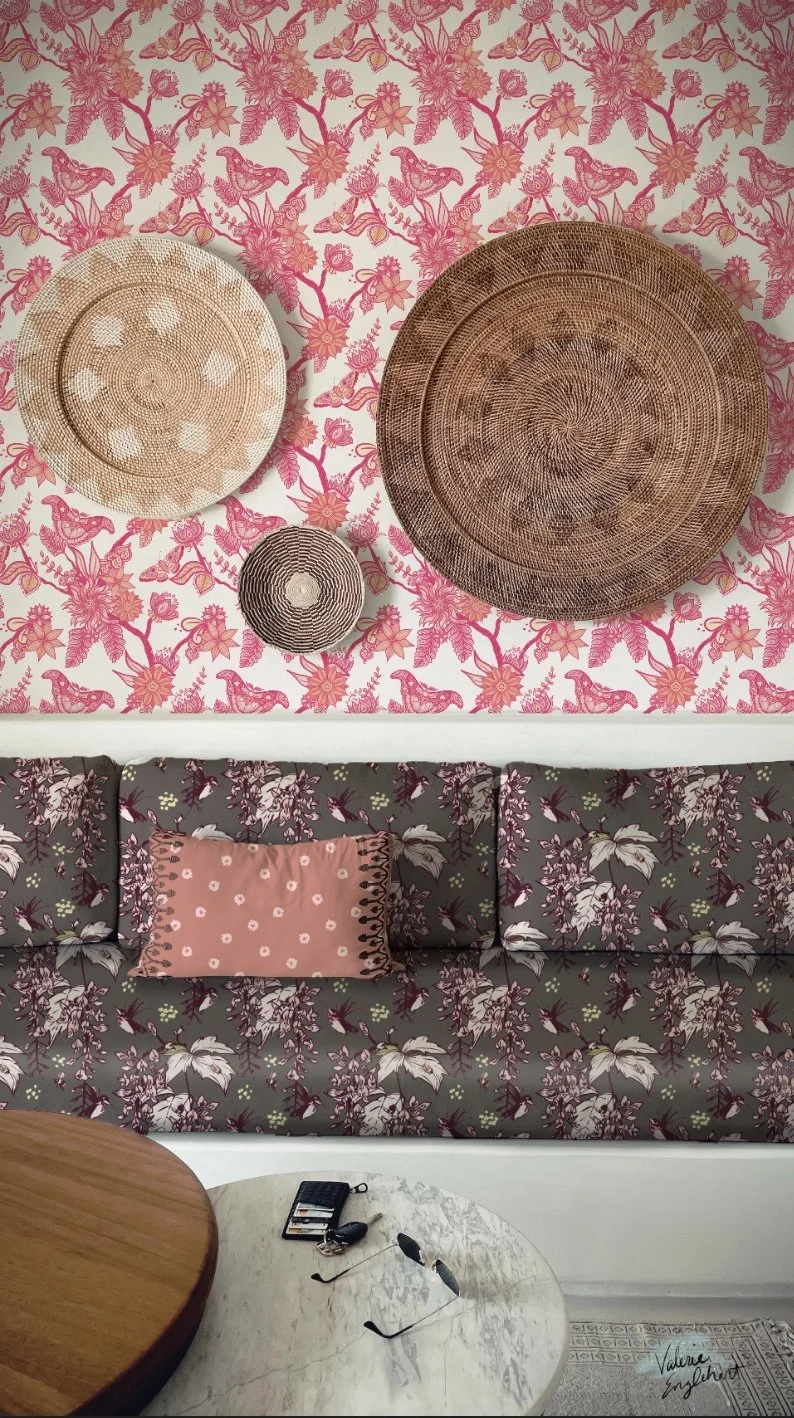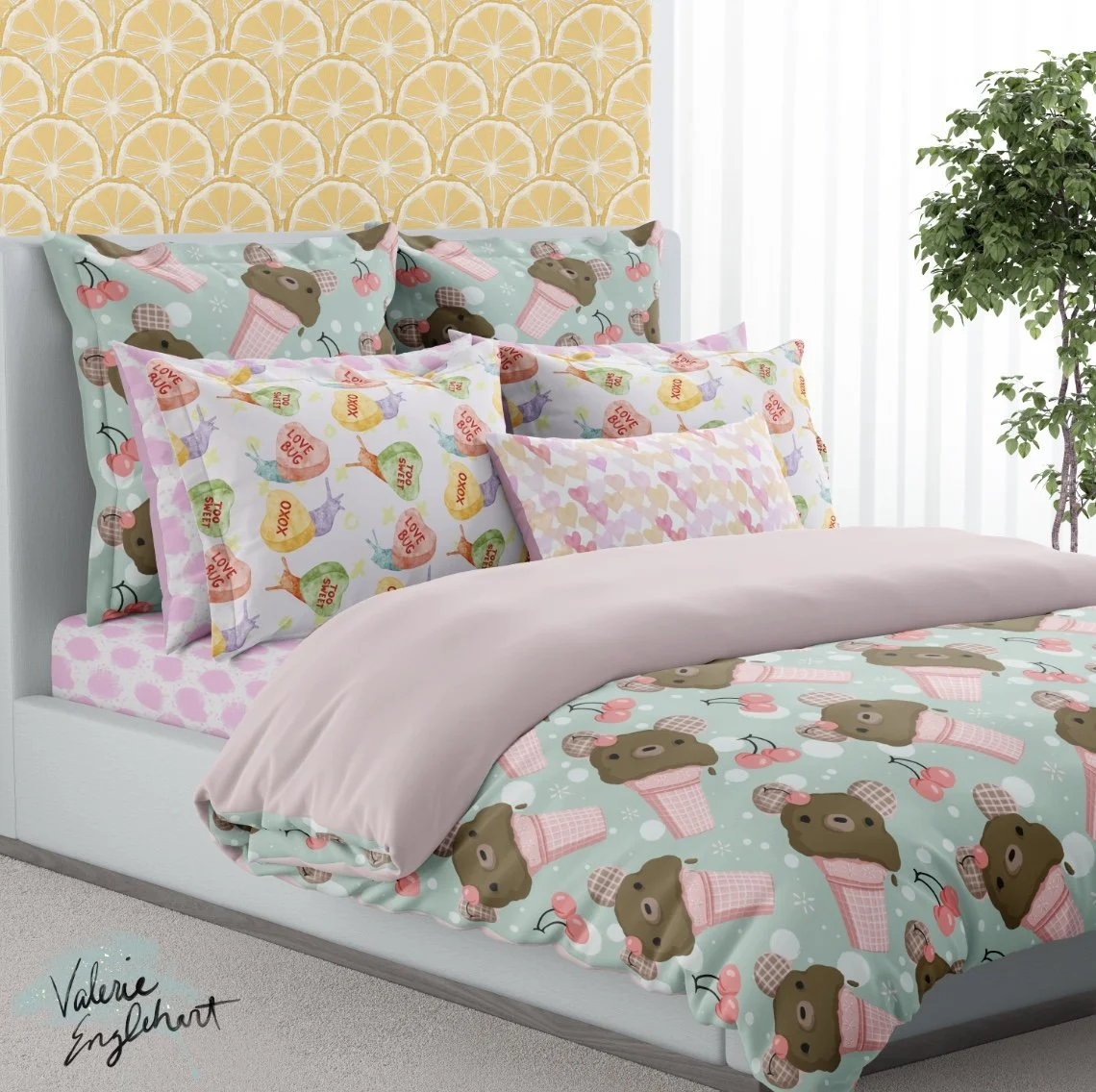Pattern Play: A Guide to Mixing and Matching Patterns for a Stylish Home
Welcome to the world of pattern play, where creativity knows no bounds and style takes center stage. If you've ever wondered how to effortlessly mix and match patterns to create a stylish and visually captivating home, then this guide is for you. Gone are the days of playing it safe with plain and predictable designs. It's time to embrace the art of pattern mixing and unleash your inner decorator. Whether you prefer bold and vibrant combinations or subtle and sophisticated pairings, this guide will walk you through the dos and don'ts of pattern play, helping you create a space that reflects your unique personality and taste. From choosing the right color palette to selecting the perfect patterns, we'll cover it all. Get ready to transform your home into a stunning showcase of pattern perfection. Let's dive in and discover the endless possibilities of pattern play.
The Importance of Understanding Pattern Types and Scales
When it comes to pattern mixing, one of the most crucial aspects to consider is the understanding of pattern types and scales. Patterns can be categorized into various types such as geometric, floral, abstract, or organic. Each pattern type brings a different energy and aesthetic to a space, and it's essential to strike the right balance when combining them. Additionally, pattern scales refer to the size of the patterns used. Mixing patterns of varying scales can create depth and visual interest in a room. However, it's important to ensure that the scales complement each other and do not overwhelm the space. By understanding pattern types and scales, you'll be able to create harmonious combinations that elevate your home's style.
Creating a Cohesive Color Palette for Pattern Mixing
Once you have a good grasp of pattern types and scales, the next step in successful pattern mixing is creating a cohesive color palette. When combining patterns, it's crucial to have a unifying element, and color can achieve just that. Start by selecting a dominant color that will serve as the anchor for your pattern mixing adventure. This color should be present in each pattern you choose, creating a sense of cohesion throughout the space. From there, you can introduce complementary colors that add depth and interest to the overall design. Remember to consider the mood and ambiance you want to create in each room when selecting your color palette. By carefully curating a cohesive color palette, your pattern mix will feel intentional and visually pleasing.
Balancing Pattern Intensity and Visual Weight
As you delve deeper into the world of pattern mixing, you'll realize that each pattern has its own intensity and visual weight. Some patterns may be more vibrant and eye-catching, while others may be more subtle and understated. Achieving balance is key to creating a harmonious space. If you opt for a bold and vibrant pattern, balance it out with a more subdued pattern to prevent visual overload. Conversely, if you choose a subtle pattern, pair it with a more visually striking one to add excitement and dimension. Balancing pattern intensity and visual weight will ensure that your space feels cohesive and well-curated.
Layering Patterns Through Textiles and Accessories
One of the easiest ways to introduce pattern mixing into your home is through textiles and accessories. From throw pillows and blankets to curtains and rugs, textiles offer endless opportunities to experiment with patterns. Start by selecting a statement pattern that will serve as the focal point, and then layer on additional patterns that complement and enhance the overall design. Consider varying the scales and types of patterns to create a dynamic and visually interesting look. Mixing patterns through textiles and accessories allows for flexibility and versatility, as you can easily swap them out or change them up as your style evolves.
Mixing Patterns in Furniture and Upholstery
If you're ready to take pattern mixing to the next level, consider incorporating patterns in furniture and upholstery. While this may seem like a bold move, it can result in a truly stunning and unique space. Start by selecting a statement piece, such as a patterned sofa or armchair, and build the rest of the room around it. Harmonize the patterns by using similar color palettes or complementary patterns. Remember to consider the scale of the patterns used, ensuring that they work well together and don't overwhelm the space. Mixing patterns in furniture and upholstery can create a focal point in a room and add a touch of personality and charm.
Incorporating Patterns in Wall Coverings and Flooring
To truly elevate your pattern play, consider incorporating patterns in wall coverings and flooring. Wallpaper, for example, can instantly transform a space and add a layer of visual interest. When selecting patterns for your walls, consider the size of the room and the overall aesthetic you want to achieve. Larger patterns can make a small room feel more intimate, while smaller patterns can add a sense of whimsy and playfulness. Additionally, consider incorporating patterns in your flooring through the use of patterned tiles or rugs. These elements can anchor a space and provide a visual foundation for your pattern mixing adventure. When incorporating patterns in wall coverings and flooring, ensure that they complement the rest of the patterns in the room and contribute to the overall design story.
Embracing Contrast and Unexpected Combinations
Pattern mixing is all about embracing contrast and unexpected combinations. Don't be afraid to think outside the box and mix patterns that traditionally wouldn't be paired together. For example, pairing a floral pattern with a geometric one can create a visually striking and unique look. Play with contrasting colors, scales, and textures to create a space that is truly one-of-a-kind. Remember, pattern mixing is an art form, and there are no hard and fast rules. Trust your instincts and have fun with the process. Embrace contrast and unexpected combinations, and you'll be pleasantly surprised by the results.
Pattern Mixing Dos and Don'ts
While pattern mixing allows for creative freedom, there are a few dos and don'ts to keep in mind. Do start with a cohesive color palette to ensure that your patterns work together harmoniously. Do experiment with different pattern scales to create depth and visual interest. Do consider the mood and ambiance you want to create in each room when selecting your patterns. Don't overwhelm a space with too many patterns; instead, aim for a balance between bold and subtle designs. Don't forget the power of negative space; it can help showcase and highlight the patterns in your home. By following these pattern mixing dos and don'ts, you'll be on your way to creating a stylish and visually captivating space.
Showcasing Real-Life Examples of Successful Pattern Mixing in Home Decor
To provide you with inspiration and a visual reference, let's explore some examples of successful pattern mixing in home decor:
1. Living Room: In this eclectic living room, a bold pink Indian trailing floral wallpaper serves as the anchor for the space. The wallpaper is complemented by a mix of floral and abstract patterns in the throw pillows, couch cushions, and wall art. The color palette of pinks and warm and cool neutrals ties everything together, creating a cohesive and visually captivating room.
2. Bedroom: This bedroom showcases the power of pattern mixing through bedding and wallpaper. A large-scale lemon scale wallpaper serves as the backdrop, while the bedding features a mix of fun novelty prints, watercolor hearts, and polka dots in complementary colors. The result is a playful and visually interesting space that exudes personality and style perfect for kids.
3. Dining Room: In this dining room, pattern mixing is achieved through a combination of wall coverings and cabinetry. A nature inspired wallpaper is paired with mid century modern circle lower cabinets and bold orange dining chairs, creating a balanced and visually pleasing look. The color palette of vibrant orange tones and deep greens adds depth and sophistication to the space.
Photo by Nicola Bushuven on Unsplash
Conclusion: Embrace the Art of Pattern Play in Your Home
In conclusion, pattern mixing is a powerful tool that can elevate the style and visual appeal of your home. By understanding pattern types and scales, creating a cohesive color palette, balancing pattern intensity and visual weight, and experimenting with different elements such as textiles, furniture, and wall coverings, you can create a space that reflects your unique personality and taste. Embrace contrast and unexpected combinations, and don't be afraid to think outside the box. Remember to follow the pattern mixing dos and don'ts to ensure a harmonious and visually captivating result. With the endless possibilities of pattern play, you can transform your home into a stunning showcase of pattern perfection. So go ahead, unleash your inner decorator, and have fun exploring the world of pattern mixing. Your stylish and visually captivating home awaits.


